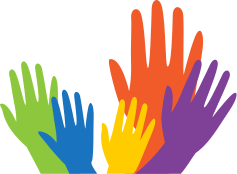Kinesthetic or hands-on/tactile learners, surprisingly, comprise only about 25-50% of learners. But maybe I’m surprised because I am definitely a kinesthetic learner! It is my major mode. For kinesthetic learners, adding physical movement as a comprehension strategy is one of the best ways to learn. They do not do as well just listening to lectures or watching videos or sitting through power point presentations.
You have already gleaned much information on how to adapt a learning environment for this kind of learner from the previous readings and exercises in this unit. Now, take a look at one special environment designed primarily for hands-on learning, and complete the exercise below.
UNIT 1, EXERCISE 4.1
For a look at one way kinesthetic learning has been incorporated into an educational facility specifically for learning challenged students, take a look at a website advertising a facility called Academy at SOAR. There is a short video presentation, and several features to read and learn about this facility that serves a population that often struggles in more traditional settings.
As you watch and read, you will learn about several kinesthetically-designed learning activities including hiking, rock climbing, snorkeling, a Spanish-immersion program and more.
For each of FIVE of these activities, write down as many traditional classroom or “regular school” learning tasks as you can think of. This is a good activity for a team or study group, as well as for individual students.
EXAMPLE:
ACTIVITY: rock climbing
CLASSROOM LEARNING TASKS:
survival skills (detail these)
physical fitness (detail these)
safety skills (details)
Math…
communication…
Writing assignment…
Get the idea?
The results of your lists will be discussed in class.
UNIT 1, EXERCISE 4.2
PART A: Team activity.
- Team up in groups of three at the most.
- Your instructor will assign each team a “learning style” (visual, auditory, or kinesthetic).
- Decide how you would teach a group of teens, in a high-risk group for not completing their high school education, the importance of graduating.
- Use “your learning style” to decide how you would present the information.
- Oh, and your community LOVES to fund education, so you have an UNLIMITED budget for field trips, production projects, etc. NOTE: you do not have to actually present the lesson, just describe it to share with the class, later on. For online learners, you can perhaps get together with a study group, or do this on your own, choosing any of the learning styles.
PART B: Independent activity–case study. Help Ben!
Ben, a first-time college student who has not attended school since he graduated high school ten years ago, is anxious about succeeding in college. He recently had to quit his very successful, though small, construction business after he hurt himself and could no longer do many of the tasks. Although he was disappointed, he sold his business and decided to invest his money in higher education to fulfill a dream he had as a youngster: becoming a history teacher. He loves to read as much as he loves building custom homes, so he looks at what happened to him as a chance to start a new chapter. That said, he’s nervous.
He was never an “A” student in school, although he received several awards for his work in shop and art classes. He also did pretty well in history classes as long as he could use his creativity. He found it hard to sit still and he was easily distracted when the teachers lectured, but he was one of the first to comprehend the information on charts and graphs. His GPA was high enough, however, to get him into college.
He wonders if you would give him some strategies about how to help him get the most out of his classes, given what he has shared, here.
Instructions: write a letter to Ben with TEN advice points to help him in his classes. Include specific strategies related to what you believe are his strongest learning styles. But also keep in mind where he struggles, too, so you can offer him some help there, as well. He has to take the following classes his first term: math, writing, effective learning, physical education, and an elective which, as you might guess, is History of the Americas, 101. A letter of advice of about 250 words will suffice.


